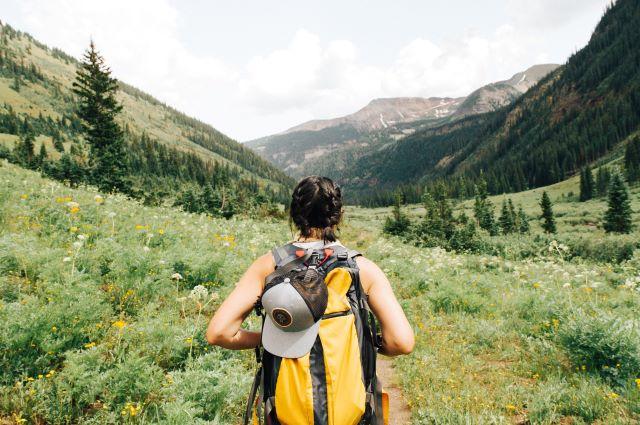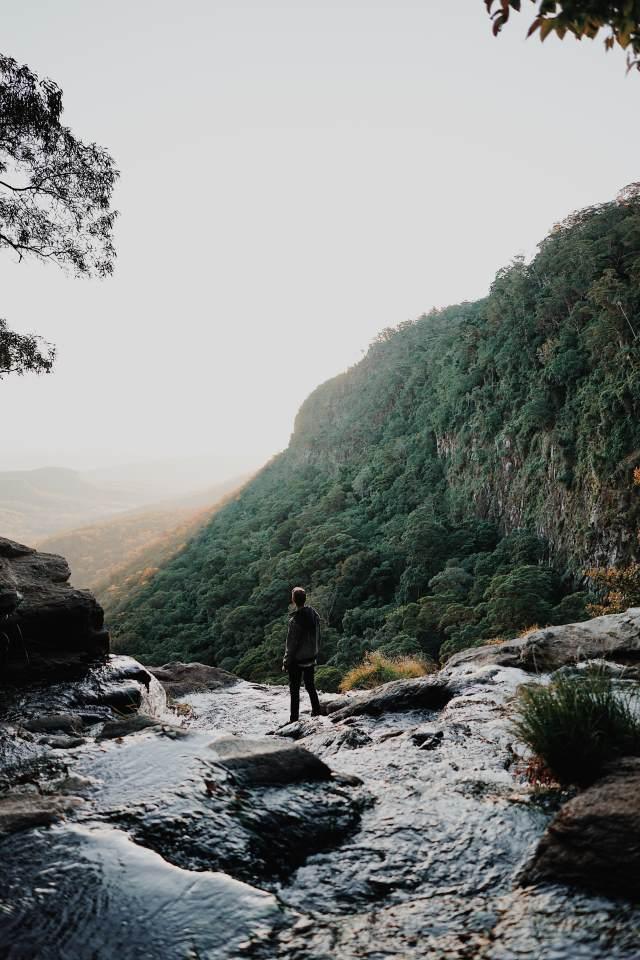The great outdoors has always been a source of solace, adventure, and inspiration for countless individuals. However, as the call of nature grows louder, so too does the impact of our footsteps. Overcrowding in natural spaces has become an increasingly critical issue, threatening the very environments we seek to enjoy.

This article delves into the effects of overcrowding on our cherished outdoor destinations and offers solutions on how we can collectively preserve these spaces for generations to come. Understanding the consequences of overcrowding is the first step toward creating a sustainable future for our planet’s natural wonders.
Overcrowding: An ever-growing Problem
The natural beauty and serenity of our planet’s wilderness have always drawn adventurers and seekers of tranquility. Yet, the more people venture into these once-remote spaces, the greater the challenges we face in preserving their integrity. Overcrowding in natural areas has evolved into a pressing concern that threatens the very landscapes and ecosystems we hold dear.
In this article, we explore the multifaceted issue of overcrowding, its far-reaching consequences, and proactive measures we can take to safeguard these precious outdoor spaces for the future. Understanding the magnitude of this problem is essential to paving the way for sustainable solutions that benefit both the environment and all who cherish it.
Negative effects of overcrowding
Environmental degradation
As throngs of visitors flock to once-hidden gems and popular natural destinations, the toll on the environment becomes increasingly evident. Overcrowding in these fragile ecosystems leads to a range of negative effects, with environmental degradation taking center stage.

In this section, we delve into the specific ways in which overcrowding harms the environment, from soil erosion to habitat disruption, and discuss the urgency of addressing these issues to preserve the natural world we hold dear. Understanding the gravity of environmental degradation caused by overcrowding is the first step towards responsible and sustainable outdoor recreation.
Loss of biodiversity
Overcrowding in natural spaces often results in the unintended consequence of biodiversity loss. As more visitors flood into these areas, the delicate balance of ecosystems can be disrupted, leading to a decline in the variety and abundance of species. This section explores how overcrowding contributes to the loss of biodiversity, impacting both flora and fauna.
We’ll also discuss the importance of biodiversity for the overall health and resilience of ecosystems and how we can mitigate this issue through responsible outdoor practices and conservation efforts.
Increased pollution and waste
The detrimental effects of overcrowding extend to heightened pollution levels and increased waste generation in natural spaces. As more people visit these areas, the demand for resources like water and energy rises, leading to pollution from various sources.

This section delves into the environmental consequences of overcrowding, including air and water pollution, as well as the improper disposal of waste. It also highlights the importance of minimizing our ecological footprint through sustainable practices and responsible waste management when enjoying the outdoors.
Impact on visitor experience
Limited access to trails and attractions
Overcrowding not only harms the environment but also diminishes the quality of the visitor experience. When natural spaces become excessively crowded, it can lead to limited access to trails and attractions. This section explores how overcrowding affects the enjoyment of outdoor enthusiasts by causing congestion, longer wait times and a reduced sense of solitude and tranquility.

It underscores the importance of adopting strategies to alleviate overcrowding and ensure that future generations can relish the beauty of these spaces without compromising their experiences.
Noise and visual pollution
The article delves into the issue of noise and visual pollution caused by overcrowding in natural spaces. It discusses how the serenity and pristine beauty of these places are disrupted by excessive noise from visitors, vehicles, and recreational activities. Additionally, visual pollution, characterized by the presence of infrastructure, signs, and crowds, affects the aesthetic appeal of natural areas.
The section emphasizes the need to strike a balance between accessibility and preserving the unspoiled nature of these spaces, promoting responsible visitation to mitigate these negative effects.
Decreased solitude and tranquility
The article explores how overcrowding diminishes the sense of solitude and tranquility that many seek in natural spaces. It highlights the importance of these settings as places to escape the noise and stresses of urban life.

Overcrowding disrupts the peace and serenity that these areas offer, reducing their appeal to those seeking a quiet and reflective experience in nature. Strategies to address this issue include managing visitor numbers, promoting quieter recreational activities, and designating quiet zones within natural spaces to preserve these essential qualities.
Strategies to preserve natural spaces
Implementing visitor management plans
The article discusses various strategies to preserve natural spaces in the face of overcrowding, with a focus on implementing visitor management plans. These plans are essential tools for regulating the flow of visitors, minimizing environmental impact, and maintaining the quality of the visitor experience.
They involve measures such as trail quotas, timed entry permits, and reservation systems, all designed to control and distribute visitation effectively. By managing visitor numbers and behaviors, these plans aim to strike a balance between access and preservation, ensuring that natural spaces remain enjoyable and sustainable for future generations.
Promoting sustainable tourism practices
In the effort to mitigate the negative effects of overcrowding on natural spaces, promoting sustainable tourism practices emerges as a crucial strategy. This involves educating visitors about responsible behavior and environmental ethics, encouraging Leave No Trace principles, and emphasizing the importance of preserving these spaces.

Sustainable tourism practices also extend to supporting eco-friendly accommodations, transportation options, and local businesses, which can collectively reduce the environmental impact of tourism. By fostering a culture of sustainability among both tourists and the tourism industry, natural spaces can be better preserved for the enjoyment of present and future generations.
Educating visitors on responsible behavior
One of the fundamental strategies to address overcrowding’s adverse effects is educating visitors about responsible behavior in natural spaces. This involves raising awareness about the fragility of these environments and the potential consequences of irresponsible actions.
Visitor education programs can communicate essential principles like Leave No Trace, emphasizing practices such as proper waste disposal, respecting wildlife and habitats, and sticking to designated trails. Through informative signage, guided tours, and outreach efforts, visitors can gain a deeper understanding of their role in preserving natural spaces, ultimately reducing the harm caused by overcrowding.
Engaging local communities
Involving local stakeholders in conservation efforts
Local communities often have a deep connection to the natural spaces surrounding them. Involving these communities in conservation efforts is crucial for addressing overcrowding. Collaborative initiatives can help establish a sense of ownership and responsibility among residents, fostering a shared commitment to preserving the environment.

This involvement can take various forms, such as community-led clean-up campaigns, sustainable tourism practices, and cultural exchange programs that encourage visitors to learn from and support local traditions. By engaging local communities, natural spaces can benefit from increased protection and sustainable management, mitigating the negative effects of overcrowding.
Encouraging community-based tourism initiatives
One effective way to alleviate overcrowding in natural spaces is by promoting community-based tourism initiatives. These programs empower local communities to take an active role in managing and benefiting from the influx of visitors. This approach not only ensures that economic opportunities are distributed more equitably but also encourages responsible tourism practices.
Community-based tourism initiatives often involve guided tours, homestays, and cultural exchanges, allowing travelers to engage with local traditions while contributing to the conservation of natural areas. By supporting these initiatives, we can strike a balance between preserving the environment and offering memorable, sustainable experiences for visitors.
Government regulations and policies
Setting carrying capacity limits
To address the challenges of overcrowding in natural spaces, government agencies can play a pivotal role by implementing regulations and policies that define and enforce carrying capacity limits. Carrying capacity refers to the maximum number of visitors an area can sustain without causing harm to its ecosystems and visitor experience.
By setting and enforcing these limits, authorities can ensure that natural spaces are not overwhelmed by tourists. Implementing permits, seasonal restrictions, and reservation systems can help manage the flow of visitors, preventing environmental degradation and overcrowding-related issues. By striking a balance between conservation and access, government agencies can protect natural areas for future generations to enjoy.
Enforcing permits and regulations
One effective strategy for preserving natural spaces and mitigating overcrowding is the enforcement of permits and regulations. These permits can include entry permits, camping permits, and special-use permits for activities like hiking, camping, or off-road driving. By requiring permits, authorities can control the number of visitors and activities in specific areas, ensuring that they do not exceed the carrying capacity of the environment.

Regulations, such as restrictions on campfires, noise levels, and waste disposal, can also be enforced to minimize the environmental impact and maintain a quality visitor experience. Enforcing these measures not only protects the environment but also educates visitors about responsible behavior in outdoor settings.
Creating alternative outdoor destinations
Identifying and developing new areas
To alleviate overcrowding in popular natural spaces, it’s essential to identify and develop new areas for outdoor recreation. Government agencies, conservation organizations, and local communities can collaborate to discover lesser-known but ecologically suitable locations for various activities.
These areas can be equipped with necessary infrastructure, such as trails, campsites, and visitor centers, to accommodate visitors safely and sustainably. By promoting these alternative destinations, authorities can distribute visitor pressure more evenly, reducing the strain on heavily congested sites. This approach not only helps protect the environment but also encourages people to explore and appreciate a wider range of natural spaces.
Promoting lesser-known natural spaces
Encouraging outdoor enthusiasts to explore lesser-known natural spaces can help mitigate overcrowding in popular areas. Authorities and conservation groups can actively promote these hidden gems through marketing campaigns, guided tours, and informational materials. By highlighting the beauty and unique experiences offered by these less-visited locations, visitors may be inspired to choose these options over overcrowded spots.

Additionally, this approach can benefit local economies by spreading tourism dollars to communities that may not have previously enjoyed the economic advantages of outdoor recreation. Ultimately, promoting lesser-known natural spaces can alleviate the strain on overcrowded areas while providing fresh opportunities for outdoor enjoyment.
Conclusion

In conclusion, addressing the challenges posed by overcrowding in natural spaces is essential to preserve the outdoors for current and future generations. The negative effects of overcrowding, from environmental degradation to diminished visitor experiences, are real and concerning.
However, through a combination of visitor management plans, sustainable tourism practices, education, and community involvement, we can strike a balance between enjoying the beauty of natural spaces and protecting them. It’s a shared responsibility to ensure that these precious places remain pristine, accessible, and awe-inspiring for all who seek to connect with the great outdoors. By working together, we can safeguard these treasures and continue to enjoy the benefits they provide.









